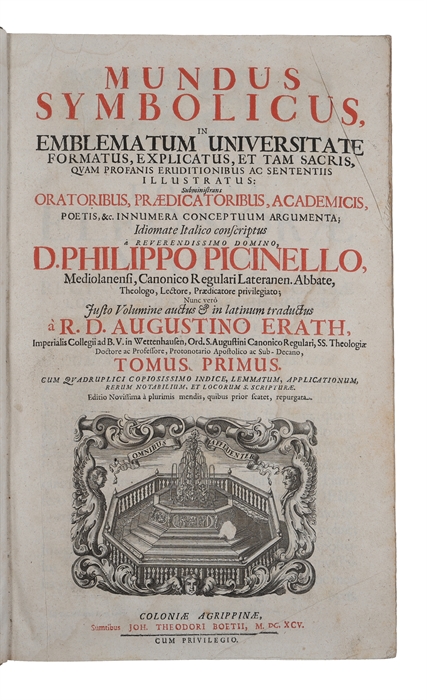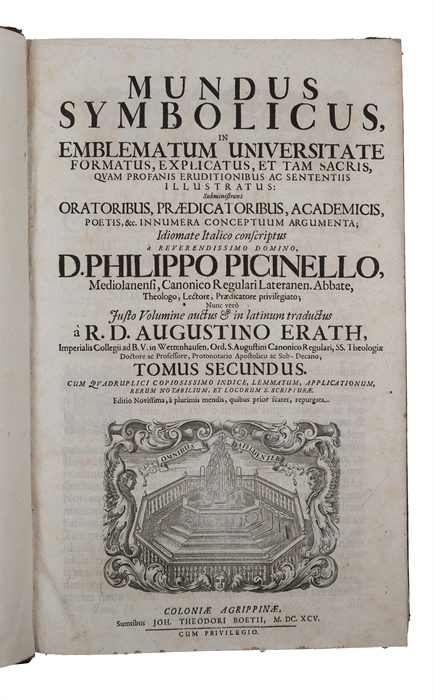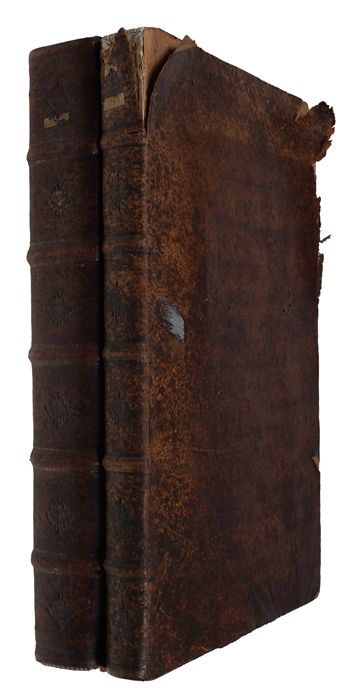PICINELLO'S BEAUTIFUL EMBLEMS
PICINELLO, PHILIPPO.
Mundus Symbolicus, in emblematum universitate formatus, explicatus, et tam sacris, quam profanis eruditionibus ac sententiis illustratus. Editio novissima à plurimis mendis, quibus prior scatet, repurgata. 2 vols.
Cologne, Boetium, 1695.
Folio (370 x 230 mm). Contemporary full sprinkled calf with five raised bands to spine. Small paper-label pasted on to top of spines. Bindings with considerable wear, worm holes to boards, leather detached from edges of boards making the wooden boards visible. Spine-ends with loss of leather, end-bands showing. With occassional browning throughout. Some papers creased. (50 - including the frontispiece), 740 (8), 276, (200) pp. (With the following errors in pagination in vol. 2: 1-84, 95-98, 199, 100-101, 202, 103-174, 171-172, 177-236, 235, 238, 237-268.). With many emblems (included in the pagination) throughout.
Fifth Latin edition, rarely found complete with both volumes as here, of Picinello’s magnificent and highly popular encyclopaedia of emblems - a cornerstone of emblematic literature and an essential guide for understanding the allegorical language of the Baroque era. “Picinelli’s intention was to compile a collection of brief interpretations which he wanted to have close to hand, especially on his travels as a preacher. From this collection of emblems, originally covering only four pages, the full reference work developed. Filippo Picinelli (1604 – 1679) was an Augustinian munk. Picinelli was born in Milan, Italy in 1604 and joined the Augustinian Order in 1614. He studied philosophy and theology at Cremona and Piacenza and lived in Milan. (Landwehr 480 - Not listing this edition, 1681, 1687, 1694 and 1715)
The author wants the book to be understood not only figuratively as a book of the world: for him it really is the world, it contains the world in all its reality and, conversely, the whole world can be derived from it. In this he follows the interpretation of Romans 1,20 that, since the creation of the world, the invisible secrets of God can be perceived by the understanding mind through His works.” (Olms Online)
Order-nr.: 61577




